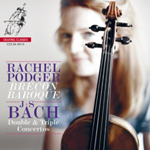This review page is supported in part by the sponsors whose ad banners are displayed below |
 |
 |
|
|
I heard an extended frequency response at both ends of the spectrum; more air and apparent detail on high strings and cymbals, deeper more powerful bass that gave drums terrific kick and snap. Never did music sound bright, edgy or hyper detailed. Big, clean, clear, natural and exciting were words that frequently came to mind. Transient and dynamic fidelity were awesome. What does all that gobbledygook mean? Essentially more music, more excitement, a greater sense of the live feel, a more compelling experience where Max Roach and Jussi Bjorling sounded like the musical geniuses they were and where my heart pounded like never before when grooving to The Clash’s London Calling [Sony/HDTracks 24/96], an album I have heard hundreds of times since 1980 in one version or another.
|
|
|
|
 |
|
|
 |
With SOtM’s sDP-1000 DAC I was able to play back DSD files. Since Channel Classics offers free samples of the same piece of music in several formats, I downloaded and compared 24/44.1, 24/96, 24/192 and DSD 1/2822.1 versions of Bach’s Concerto for Two Violins. I could clearly hear the difference between each format. In fact those differences were considerably more apparent with the LightSpeed than with any other USB cable on hand. I did not experience dropouts or ticks and pops but then again the same was true with the Cardas, Nordost, Transparent and even a generic cable where I suspect my ruthless efforts to keep latency as low as possible on my laptop probably helped. Overall I’d say I preferred DSD as the violins came across more naturally and the music seemed to flow with a greater sense of ease. I haven’t heard enough DSD to claim hands-down superiority as some have but what I heard was promising.
|
|
I simply still believe the providence of recordings complicates comparisons. Was an album recorded in 24/96 and converted to DSD or was it native DSD downsampled to PCM? Experience taught me that the more a music file is converted from one sample/bit rate to another, the more variable the results. Frankly I’m more concerned about the recording process or performance than what format is used. For the most part 24/88.2 or 24/96 serve me just fine.
|
|
|
|
I never thought that a bloody USB cable would have such an enormous impact on my enjoyment of file playback. Hobbyists who have latched onto streaming expecting freedom from the vagaries, tweaks and potential cost of conventional spinning silver disc playback are in for a rude awakening. If anything the so-called future of music playback is more fragile than some folks believe. Everything makes a difference, be it AC purity, vibration & resonance control, susceptibility to high-frequency noise, playback software, hardware, operating system, software configuration, cabling for power, USB or Ethernet. All can affect time-correct bit-perfect signal transmission. The Light Harmonic Lightspeed USB cable sure seems to go a long way in addressing many of those challenges. Expensive perhaps but considering that I have tried interconnects at twice its price that didn’t affect music anywhere near to the same degree as the Lightspeed; the asking price sure seems reasonable. This is an outstanding product and warmly recommended.
|
|
 |
Quality of packing: Excellent.
Reusability of packing: Seems reusable several times.
Quality of owner's manual: Documentation is excellent. Ships with manual, QuickTime movie, pictures and price list on USB key.
Condition of component received: Perfect.
Completeness of delivery: No issues.
Website comments: Has good pictures and descriptions of products.
Human interactions: Professional and friendly.
Pricing: At first blush seemingly excessive for a USB cable until you hear it. Furthermore I’d say that in the hierarchy of cabling the impact of a USB cable now surpasses that of interconnects or speaker cables.
Warranty: Lifetime transferable warranty. If you break it, Light Harmonic will replace it.
Final comments & suggestions: None.
|
|
|
Manufacturer’s response: Thank you Paul for your thorough review of our LightSpeed USB cable.We were especially excited to see that you grasped just how big a difference this slender little link can make in a system's performance. While dogmatists insist that "bits are bits", the fact is that unless those bits can be read clearly, accurately and at the right time, system performance will be greatly compromised. Any highly resolving audio system, be it analog or digital, requires optimization to perform its best. We're happy that you agree that LightSpeed is a major element in optimizing a computer-based audio system. Thanks to you for your diligent efforts and to publisher Srajan Ebaen for championing the brave new world of hi-res digital systems! - Larry Ho, Gavin Fish, Kim Kaplan, Bill Leebens for Light Harmonic
|
 |
  |
| For a third opinion by Srajan Ebaen, flip one more page... |
|
|
 |
|